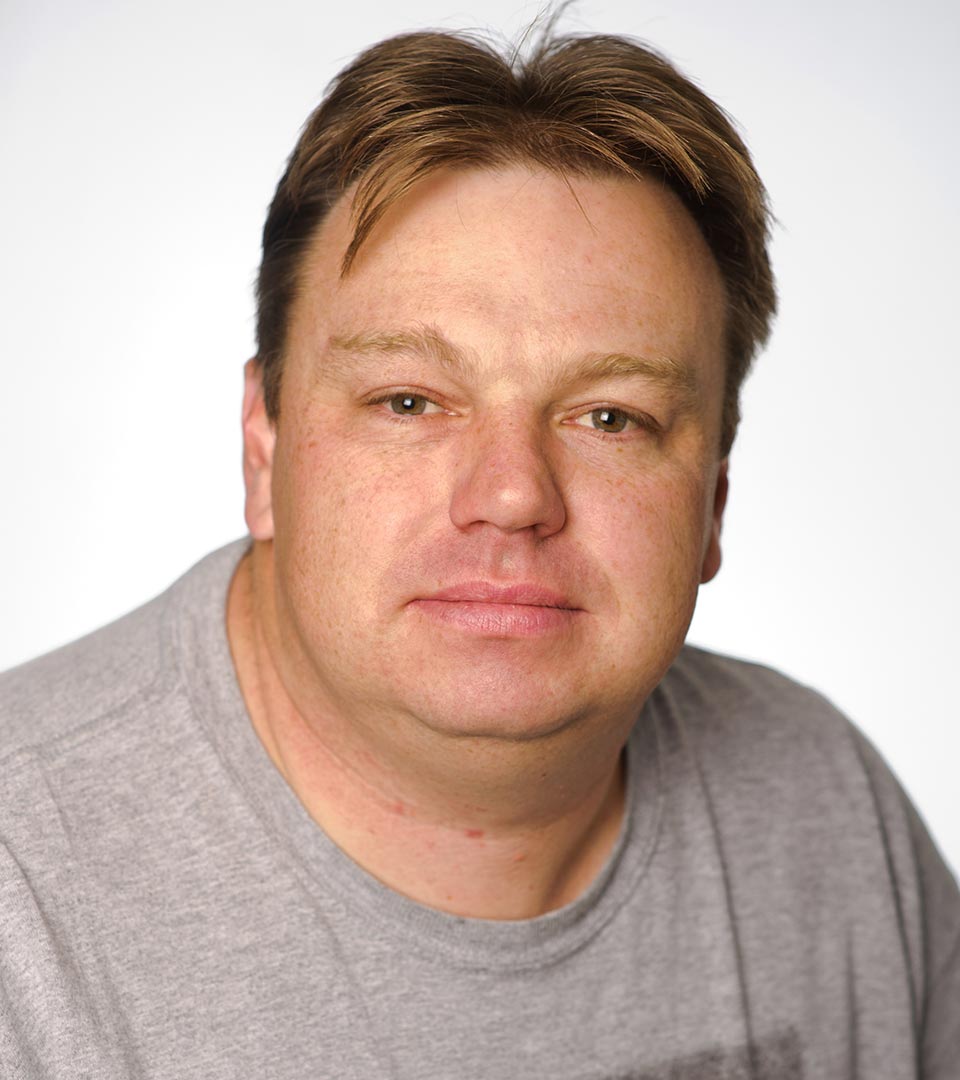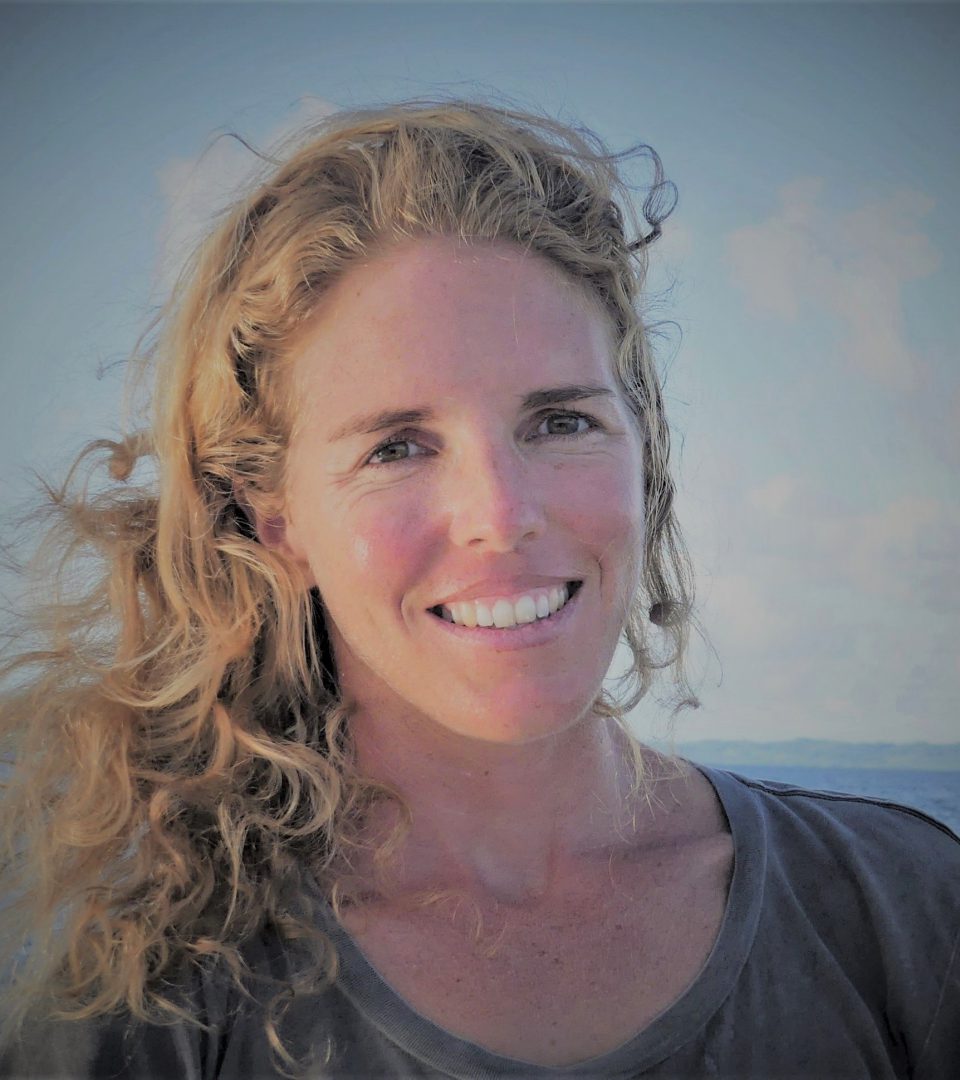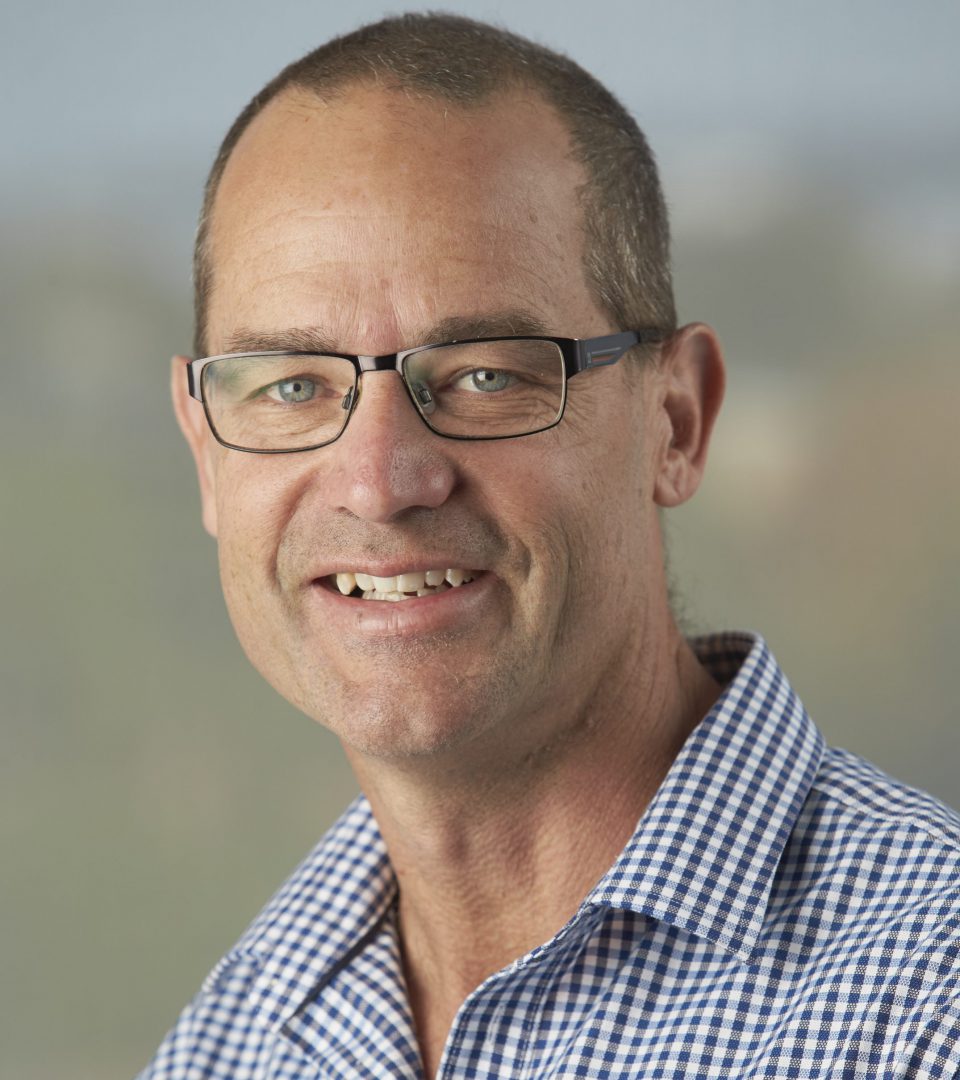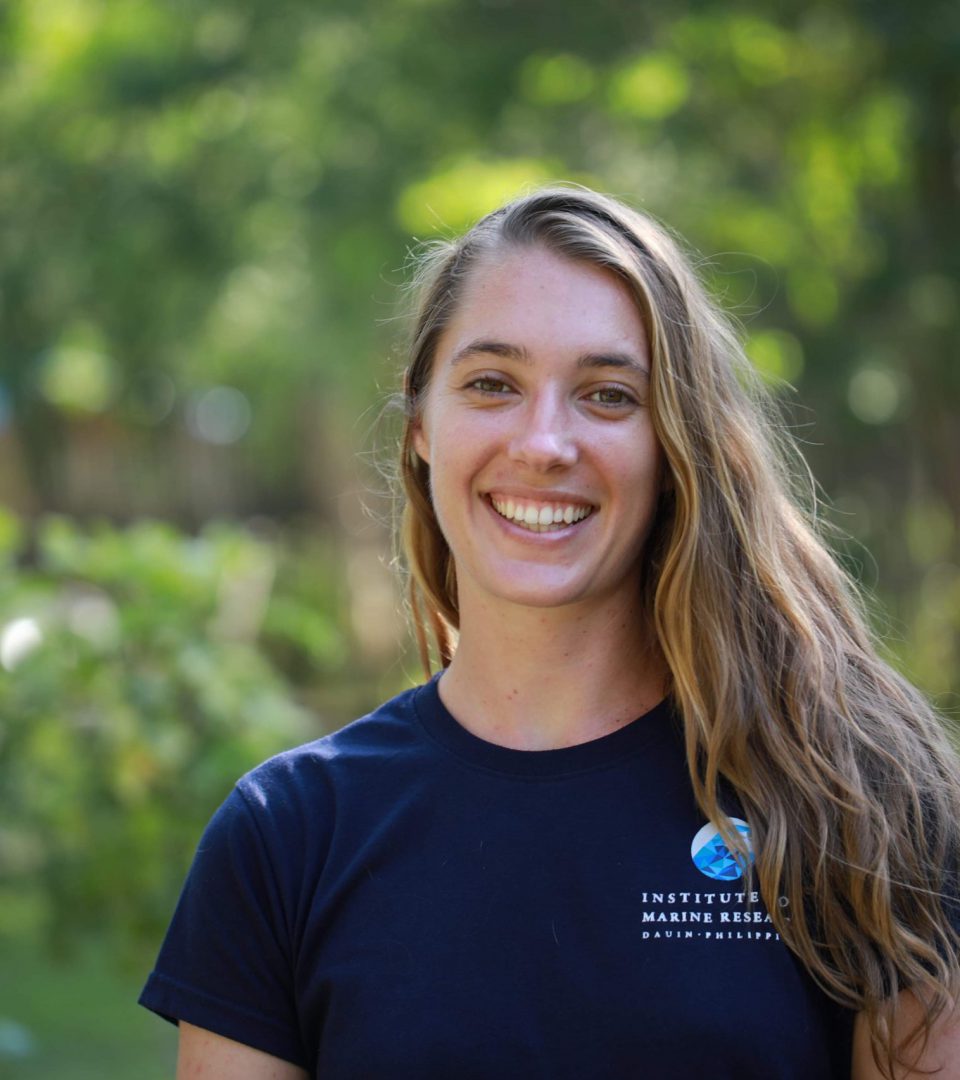Moving Corals
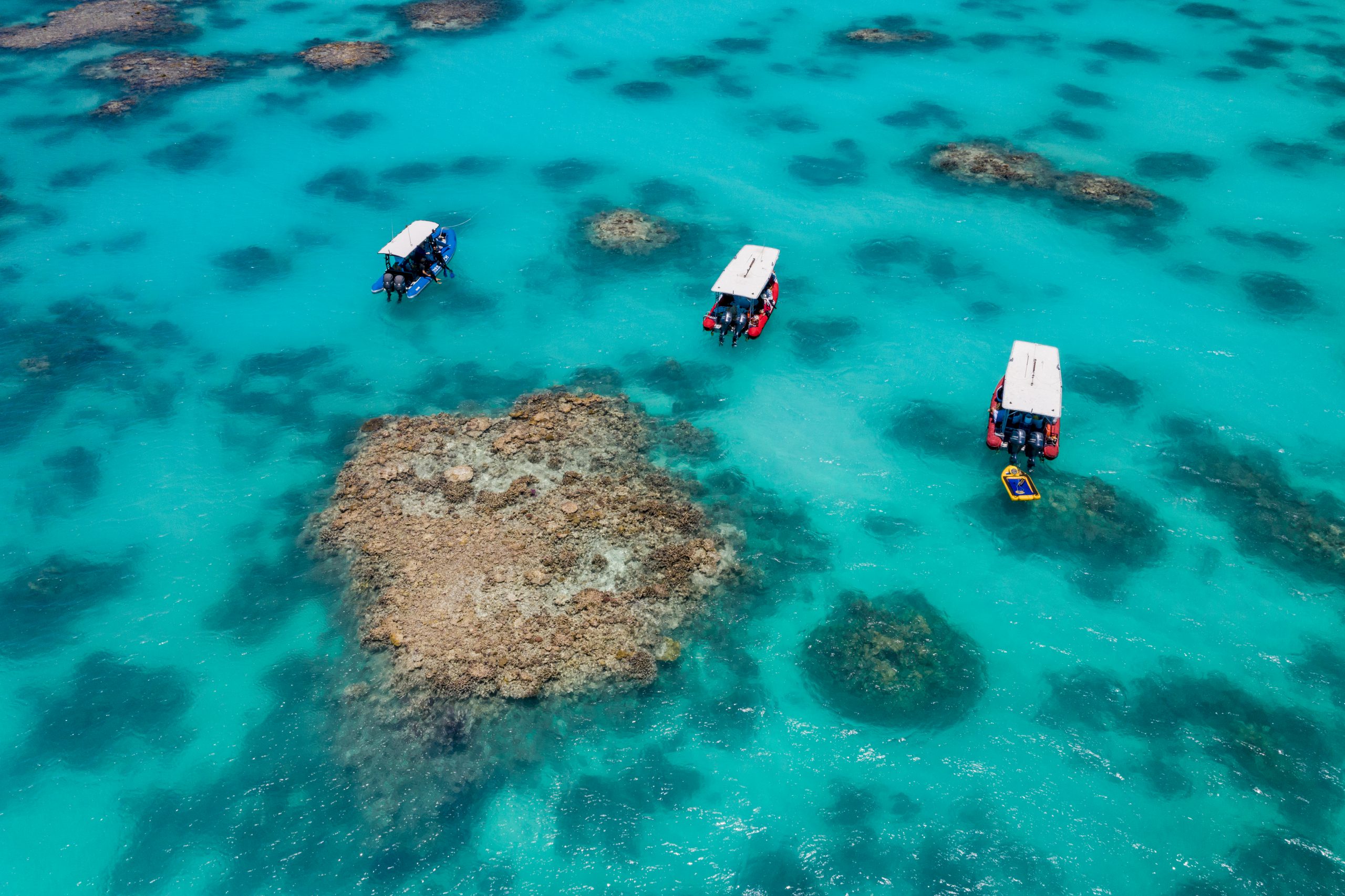
Floating pools during larval release onto degraded reef patches Photo: SCU
Coral restoration using larval seeding aims to speed the return of coral cover, diversity and complexity to damaged reefs. It does this by increasing the number of coral larvae available for settlement and growth into new corals, particularly where reefs have low larval supply (e.g. following largescale bleaching that can kill many breeding corals).
The RRAP Moving Corals R&D Subprogram aims to develop the means to cost-effectively produce billions of genetically-diverse coral larvae with enhanced environmental tolerance for large-scale restoration. Larvae will be harvested from wild coral-spawn slicks, cultured in floating nurseries, and transferred for settlement to reef areas to catalyse coral restoration, adaptation and reef recovery.
This subprogram will develop:
Collection and transfer techniques...
that efficiently capture wild coral-spawn slicks in common reef- and weather-dependent scenarios
Experimental treatments of larvae during mass culturing...
to enhance their survival and growth
Deployment and monitoring techniques...
that provide scalable targeted transfer of larvae onto reefs through direct application or via settlement on devices
Long-distance transfer and delivery methods...
of naturally more thermally-tolerant larvae to facilitate reef recovery following coral bleaching.
The Moving Corals Subprogram supports and directly interacts with the following RRAP subprograms: EcoRRAP, Coral Aquaculture and Deployment, Enhanced Corals and Treatment, Rubble Stabilisation, Deployment Logistics and Automation, Modelling and Decision Support.
Scope and expected outcomes
Moving Corals will expand current smaller-scale methods of spawn and slick capture and larval rearing to develop and test large-scale routine production and transfer of hundreds of millions to billions of larvae at sea. The aim is to achieve targeted delivery and settlement to reefs with low coral cover over multi-kilometre scales.
In Years One to Three we aim to enhance the effectiveness of coral larvae collection, cultivation and deployment. Each year we will develop a different aspect of collection and transfer, experimental treatments of larvae and deployment and monitoring techniques.
Variations will be tested in the field at spawning, and refinements applied following field trials in the subsequent years.
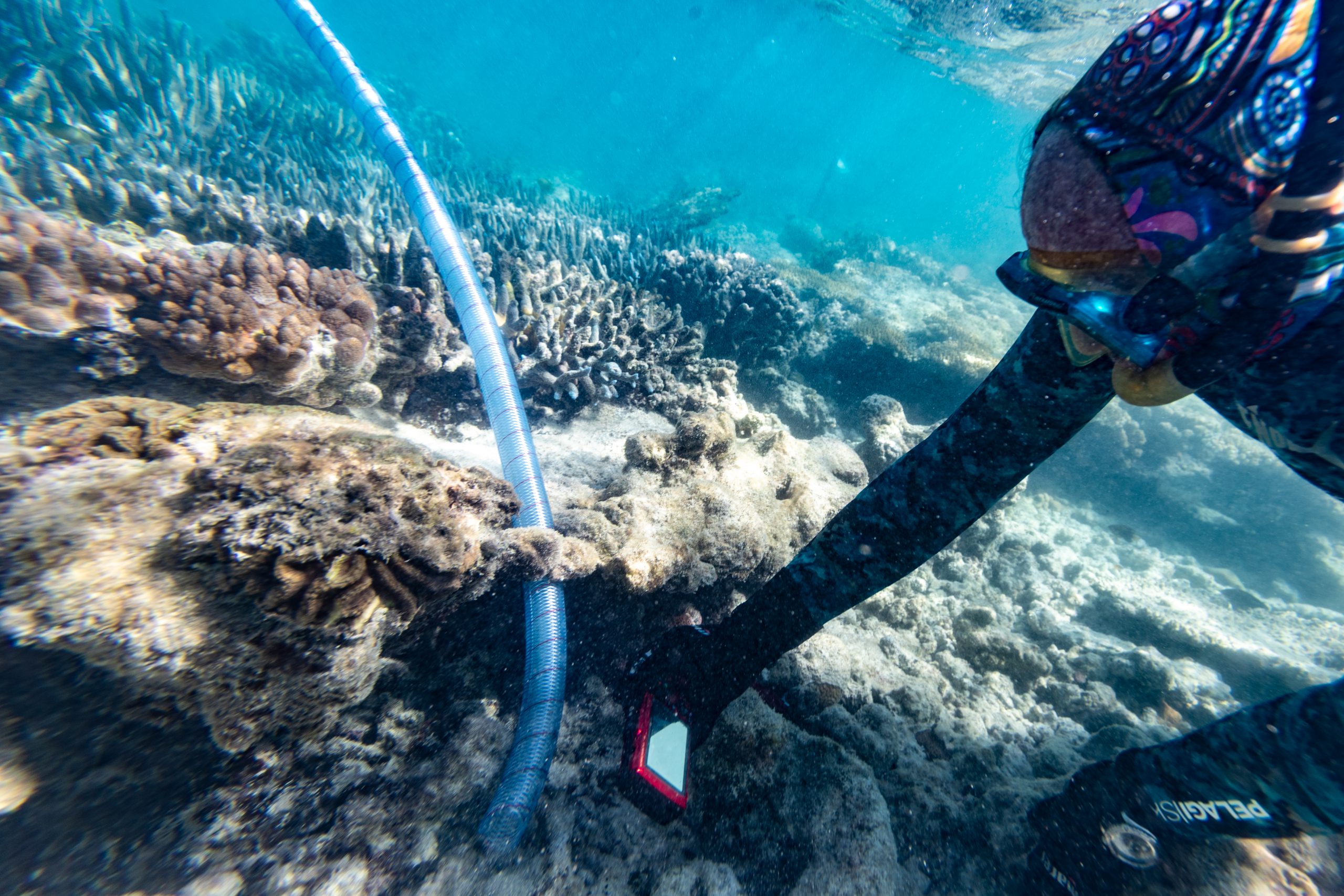
Seeding larvae onto degraded reef areas Photo: SCU
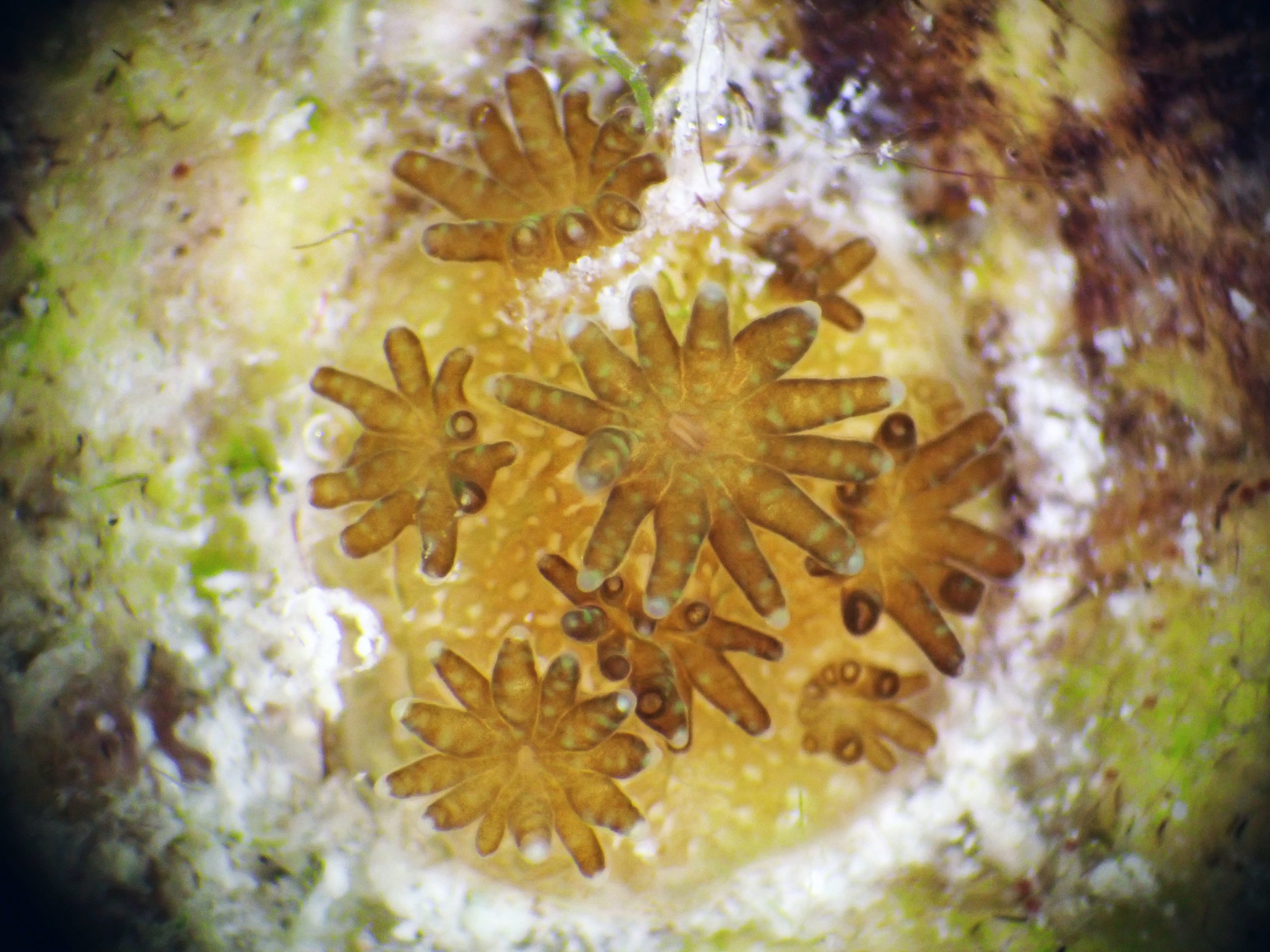
Six-week old coral juvenile after larval seeding onto reef Photo: Peter Harrison
Year Four aims to test effectiveness of assisted larval transfer, using the fully-refined techniques to complete a transfer of larvae from warmer northern reefs to cooler southern reefs and transfer and deploy settled coral juveniles to target reefs for restoration and recovery.
During development, the scaling, mechanisation and automation will progressively increase, so that methods for deployment of billions of larvae for large-scale restoration are ready from Year Five onwards.
These outcomes will enable key knowledge transfer to enable future implementation of routine, reef-scale larval restoration over multiple high-value ‘source’ reefs in different regions by stakeholders.
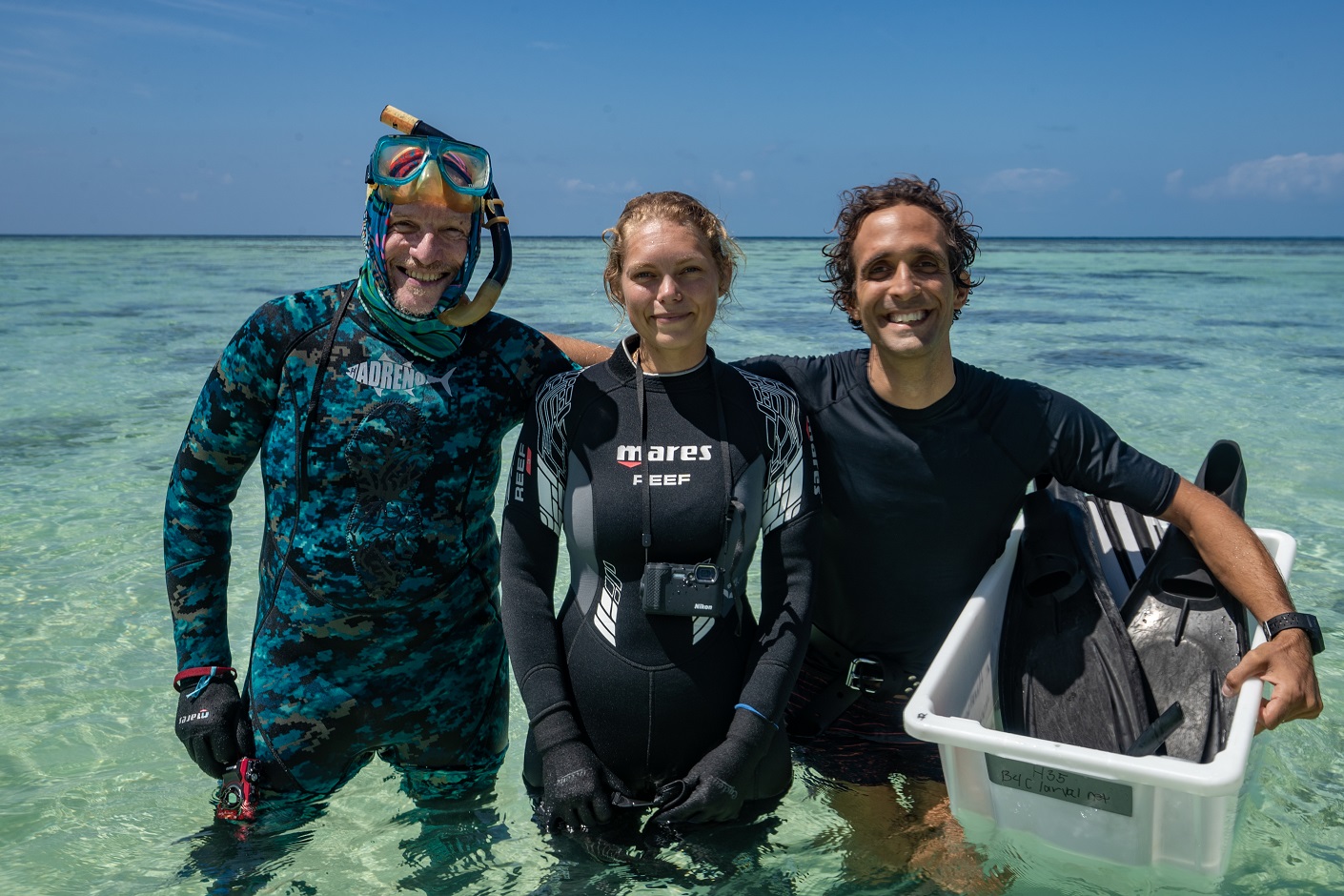
CSIRO’s Dr Christopher Doropoulos (right) with Southern Cross University’s Professor Peter Harrison (left) and research assistant and PhD candidate Christina Langley. Image: Southern Cross University. Credit: SCU
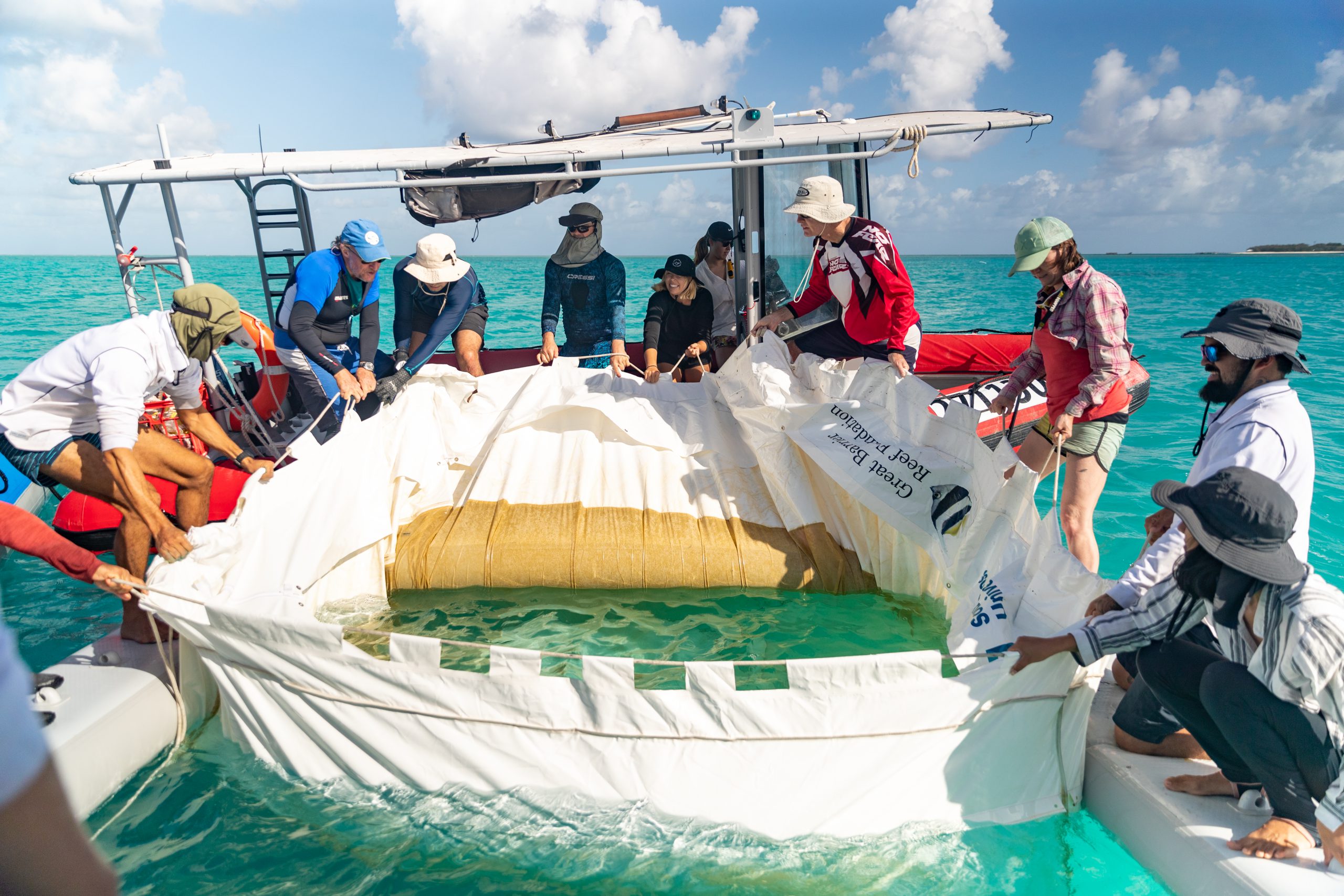
Concentrating coral larvae in a culture net for release onto sections of damaged reef. Photo: SCU
Current projects
Larval Collection, Culture, Deployment and Assisted Transfer
This project will expand current smaller-scale spawn and slick capture and larval rearing methods to develop and test larger-scale routine production and transfer of larvae for restoration of high-value reefs.
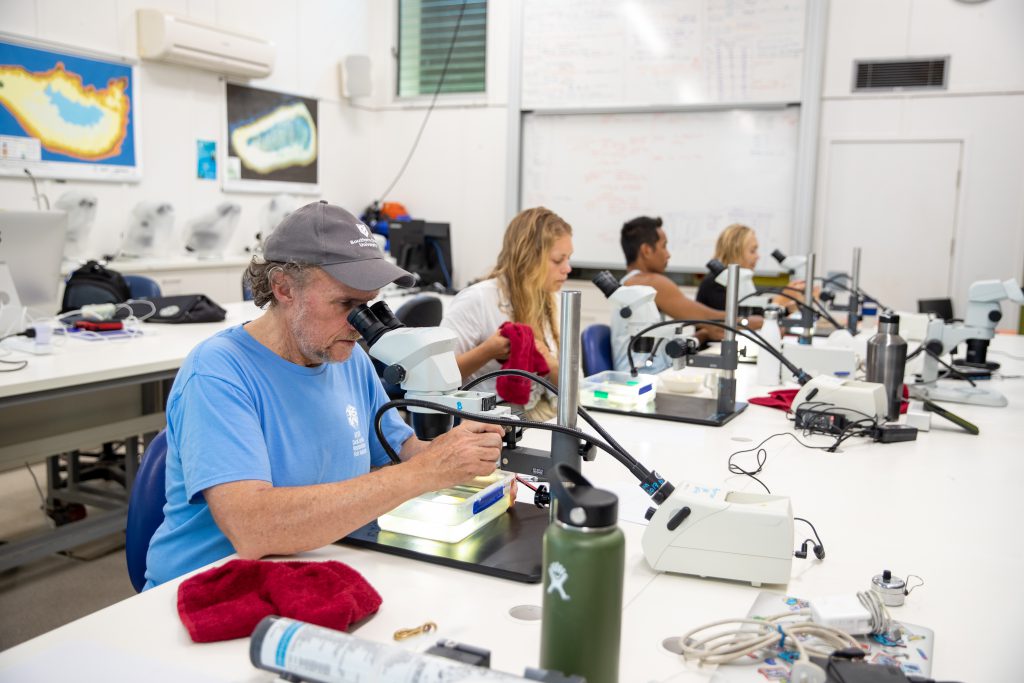
Subprogram leaders:
Subprogram team members:
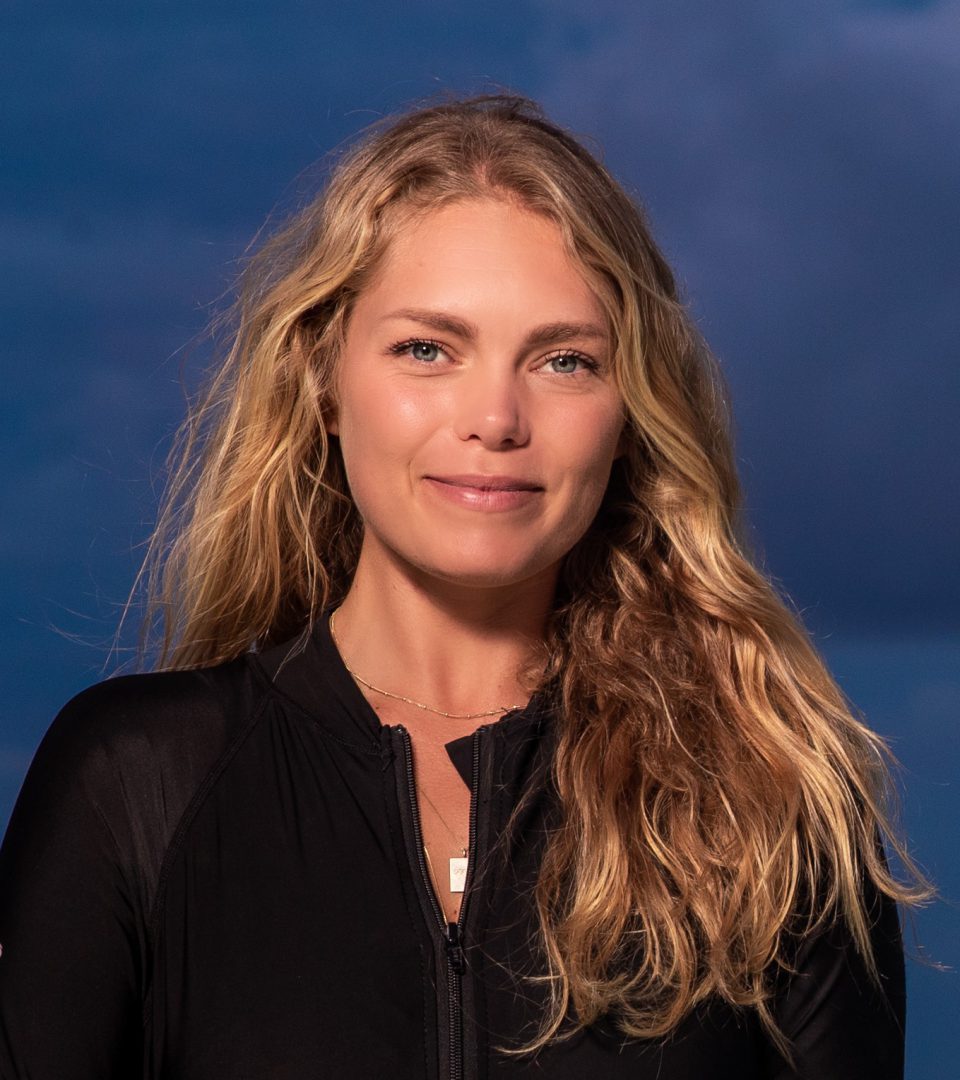
Christina Langley
SCU


